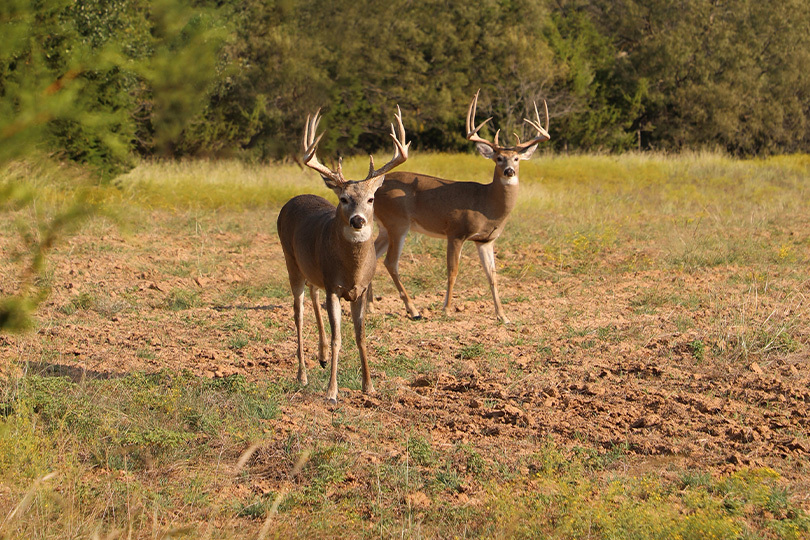By Emmy Powell
Communications Specialist
Texas hunters and landowners are being asked to stay alert for signs of New World screwworm as hunting season gets underway.
Although the pest has not yet been detected in the U.S., vigilance remains critical for early detection in wildlife, livestock, equine and pets. While livestock, equine and pets are routinely monitored by owners, wildlife roam freely and do not recognize borders. That’s why hunters and landowners are encouraged to watch for any signs of screwworm infestations while in the field.
Texas Parks and Wildlife Department (TPWD) is working closely with the Texas Animal Health Commission (TAHC) to equip biologists and staff to identify and respond to potential screwworm cases.
Kory Gann, TPWD big game program director, said hunters and landowners are vital partners in surveillance efforts.
“Wildlife surveillance is going to be extremely important in identifying screwworm infestations in Texas,” he said. “Hunters are going to be extremely important. As they go out into the hunting season, there will be a lot of eyes out there on wildlife between trail cameras, hunting out of blinds and observing wildlife. We’re instructing hunters that if they do observe potential New World screwworm infestations in wildlife, that they contact their local wildlife biologists.”
When a potential infestation is reported, the biologist will work with the wildlife health team to collect samples and send them to a lab for confirmation.
“Things to be looking for are going to be open sores or wounds that have maggots in them, animals shaking their heads, have an irritated demeanor or a foul rotted flesh odor,” Gann said. “If there’s a live animal with maggots in its wound, then it’s definitely going to be a concern of ours to try to get our hands on those maggots to get them shipped to see if they screwworms.”
All warm-blooded mammals can be infested with New World screwworm, but white-tailed deer, rabbits (jackrabbits, cottontails), small mammals and turkeys are wildlife species that are more commonly affected, according to TPWD.
Common sites of infestation include:
- Umbilical stump or navel of newborn animals
- Mucous membranes such as eyes, nose, mouth and genitalia
- Areas of damaged skin—cuts, scrapes, stings, tick bites, antler/velvet shedding;
- Wounds from management-related procedures—ear tagging, castration, branding, fawning.
TPWD published a PDF guide on New World screwworm identification and reporting. Gann noted the importance of quick reporting by anyone who suspects an infestation.
“It’s extremely important that landowners, hunters or really anybody that sees suspected cases contact the appropriate agencies,” he said.
TPWD and TAHC are developing a factsheet for landowners and hunters that will become available later this fall. It will include guidance on animal treatment, ways to kill larvae and proper carcass disposal methods for suspected screwworm cases.
“If you see something suspicious, report it,” Gann said. “If New World screwworms do arrive in Texas, early detection is going to be key as we look at how we’re going to respond. Prompt detection of screwworm in wildlife is going to allow for rapid response efforts, including sterile insect release programs to contain outbreaks and prevent further spread to livestock and other animals.”
For more information, visit the TPWD website or find a local wildlife biologist here.
Learn more about New World screwworm at screwwormtx.org.


Leave A Comment